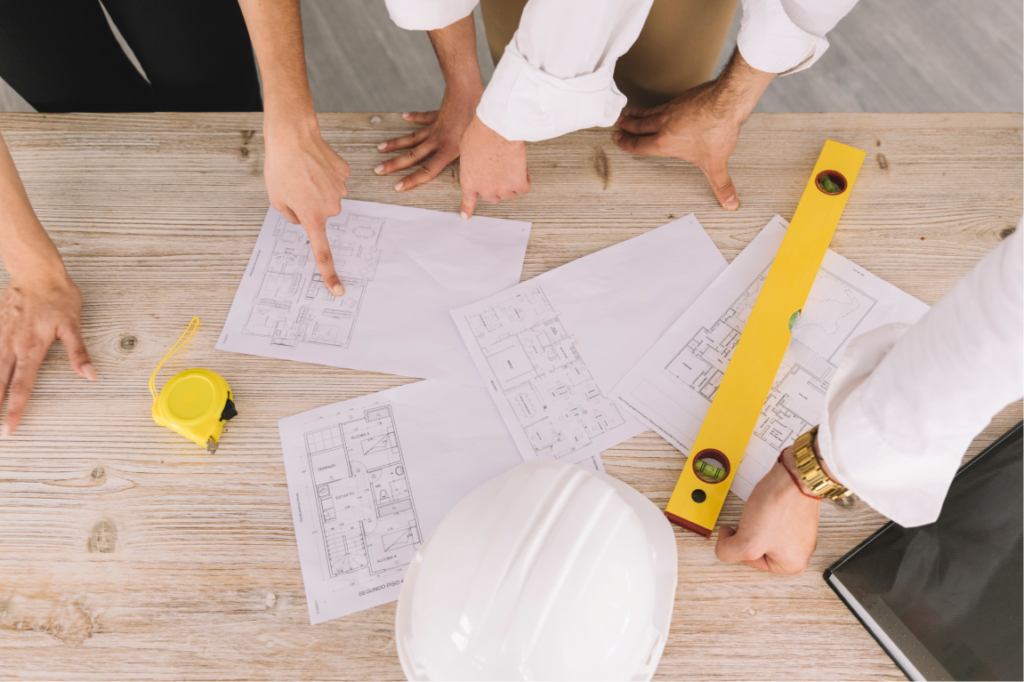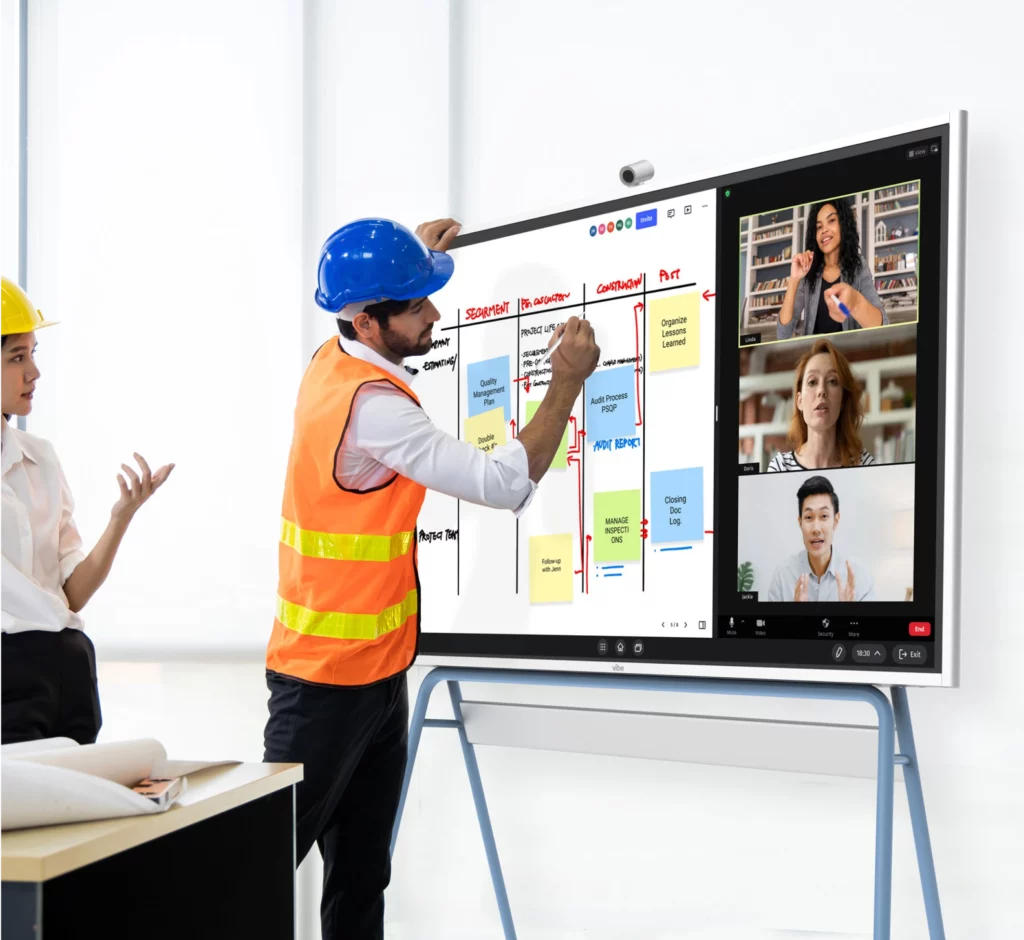The Architect’s Burden
Did you know that the average architect spends over 15 hours a week managing project-related documents? In the fast-paced world of architecture, where creativity meets precision, the efficiency of your workflow is crucial. Yet, many architects find themselves bogged down by one common challenge: managing cumbersome physical files. The process of dealing with paper documents—updating, organizing, and archiving—can be a significant drain on time and resources.
Imagine being surrounded by stacks of paper blueprints and scribbled notes, wasting hours ensuring every revision is properly reflected. What if you could streamline this process, reduce errors, and free up time for innovation?
That’s why managing file overload for architects requires a shift toward digital solutions. Digital tools simplify file management, making it easier to update, organize, and collaborate efficiently.

The Hidden Costs of Traditional File Management
30 – 50% of most organizations’ budgets on file data storage and backups.
(Resource: 2022 Komprise State of Unstructured Data Management Report)

Managing physical files isn’t just a logistical headache—it’s a drain on your organization’s resources. From the cost of paper and ink to the hours spent organizing, printing, and storing documents, these inefficiencies add up quickly. For large-scale architectural projects, where multiple revisions are standard, tracking paper documents becomes increasingly complex, further slowing down productivity.
By continuing to rely on physical files, architects not only waste time but also incur higher printing and storage costs. Transitioning to digital systems eliminates these burdens, allowing architects to streamline their workflows, reduce operational costs, and focus on their core work: designing and innovating.
Transition to Digital Platforms: An Efficient Solution
Thankfully, architects can now shift from outdated paper-based systems to more efficient, digital platforms. By adopting modern tools, you can reduce printing costs, streamline collaboration, and significantly improve productivity across your team.
One such useful tools is the Vibe Board, a smart whiteboard that integrates seamlessly with construction apps. It allows architects to upload blueprints, make real-time annotations, and easily share the latest versions with their team. No more lost documents, no more outdated information—just seamless collaboration.
By embracing digital solutions, architects not only improve project management and team collaboration but also save on printing and storage costs, freeing up valuable resources.
- Reduce printing costs by minimizing paper usage
- Lower the time and expenses associated with managing and storing physical documents
- Free up valuable office space and cut down on energy costs related to file storage
Check out this story—after using the Vibe Board for over a year, architect Steven Bakzek eliminated his dependence on paper and transformed his design process. By adopting digital tools, Steven can now visualize and refine his designs in ways that traditional blueprints simply couldn’t match.
Related: Steven’s Vibe Story – How architect of 30+ years experience transforms workflow
5 Essential Tips for Digital File Management

Maximizing the benefits of digital file management requires adopting best practices to ensure efficiency. Here’s how you can optimize your digital workflow:
- Centralize Your Document Repository: Store all project-related documents in a single cloud-based platform. Paired with tools like the Vibe Board, this allows for seamless collaboration in real-time, ensuring that the latest versions are always accessible.
- Use Consistent Naming Conventions: A standardized naming system makes locating specific documents easier, reducing the risk of errors and eliminating the need to print documents unnecessarily.
- Implement Regular Backups: Cloud-based platforms offer automatic backups, reducing the risk of data loss. Vibe Board’s integration with these platforms ensures that no project data is lost due to hardware failures.
- Leverage Version Control Features: Version control allows architects to manage multiple revisions digitally. Vibe Board’s side-by-side comparison feature enhances this, letting you track changes without the need to print different versions.
- Promote a Paperless Culture: Encourage your team to use digital tools and cloud storage, making it easy to save and share documents with real-time access to the latest versions. This reduces the need for printouts while keeping workflows efficient and flexible.
{{< blog/cta-download-new content=”S1 Product Brochure” extra=”false” pdf=”https://vibe.us/pdf/s1-product-brochures/?utm_campaign=productivity-mapping&utm_medium=blog&utm_source=blog”>}}
Enhancing Team Efficiency with Visuals
Beyond saving costs, digital tools enhance engagement with interactive visuals. Using the Vibe Board’s large touchscreen display, architects can collaborate with team members in real-time, reducing the need for printed materials. The interactive features also improve communication, as team members can annotate and brainstorm solutions instantly.
Additionally, visual dashboards can keep the team updated on project status without relying on paper-based tracking systems.
Related: SBW’s Vibe Story – How AEC team can stay on the same page?
Lead the Change: Go Digital, Stay Ahead
Now is the perfect time for architects to go digital. By adopting tools like Vibe Board and efficient file management practices, architects can significantly improve their workflow while cutting unnecessary costs.
Transitioning to digital systems not only streamlines daily operations but also contributes to a more cost-effective approach. With reduced waste and enhanced collaboration, architects can lead the charge toward a more paperless industry. This is the first step toward building a more efficient, modern future.

Ready to streamline your workflow and contribute to a more sustainable architecture industry? Check out Vibe today!
